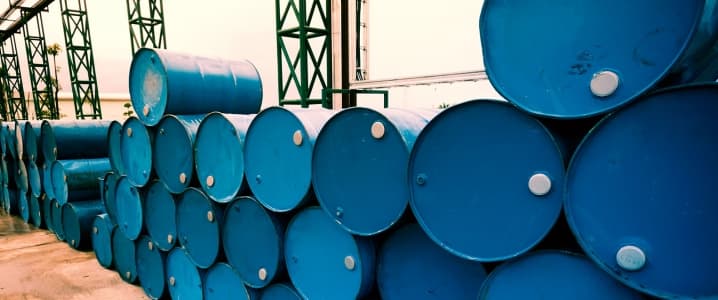The price of oil has always been driven by cycles of fear and complacency. During the cycle of fear, geopolitical events can send the price of oil soaring. During the cycle of complacency, oil prices will fall on bad news (e.g., the appearance of too much supply or weakening demand), but often seem immune to bullish news.
Over the past decade, the world has experienced both cycles.
The Cycle of Fear
A decade ago “peak oil” was helping drive the fear cycle, as many credible voices asserted that a terminal decline in oil production was imminent. For a while, it looked like they might be right.
Production in Saudi Arabia remained flat even as global demand continued to grow, and oil prices skyrocketed above $100 a barrel (bbl). These were just the types of consequences predicted by those who predicted an imminent terminal decline.
But the reality was that Saudi Arabia and OPEC were happy with $100/bbl oil, and they were slow to increase production, arguing that the world was well-supplied. Fear mostly had the upper hand from about 2005 until mid-2014.
Enter the Shale Oil Boom
As oil prices rose, some oil resources that were previously uneconomic to produce became attractive for the first time. After falling for nearly 40 years, U.S. oil production began to surge as a result of the marriage between hydraulic fracturing and horizontal drilling. The upturn in oil production began in 2009, and then U.S. oil production proceeded to grow at the fastest rate in history. Related: Vienna Is The Ultimate OPEC Smokescreen
Global demand for oil remained high. In fact, despite government mandates in support of biofuels and the explosive growth of electric vehicles (EVs), global oil demand has grown at an average rate of 1.1 million barrels per day (BPD) for more than 30 years:

(Click to enlarge)
Global oil consumption 1965-2016.
Complacency Returns
Nevertheless, the addition of all that U.S. production began to push supply ahead of demand. OPEC, fearing a loss of market share, declared in November 2014 that it would defend market share, and it added nearly three million barrels per day (BPD) into a market that was already well-supplied. The result was a surge of global inventories – the primary cause of the oil price collapse – and a return to complacency.
Complacency has ruled the markets since mid-2014. But the oil markets are moved by inventories, and in November 2016 OPEC announced a plan to reverse the inventory build they helped create. OPEC announced that it would enact 1.2 million BPD of production cuts and that certain major non-OPEC members – most notably Russia – would cooperate with the production cuts, pushing the total amount of targeted cuts to 1.8 million BPD.
U.S. shale oil production rose in response to the news, but the oil market remained flat. Through the spring and summer, demand continued to grow, crude oil inventories declined, but the price of oil failed to move.
Related: Who Will Win The Self-Driving Taxi Race?
Finally, in late August of this year, it started to become apparent that oil supplies were falling behind demand. The price of WTI moved up from the mid-$40s to the upper-$50s, and Brent crude rose to over $60/bbl — the highest level in two years.
Higher Oil Prices in 2018
The likely scenario for 2018 is a continuation of the tightening that has been underway for the past six months. As the market continues to tighten, prices will continue to rise, but the fear cycle will gradually become more prominent. This once again increases the risk of oil price spikes based on geopolitical events in oil-producing regions.
The only real threats to this scenario are OPEC having the ability to – and making the decision to – once again flood the market. This is unlikely given the steep price they paid for taking this action in 2014. Alternatively, a global recession is the only other likely candidate for curbing oil prices. Otherwise, $70/bbl or more looks likely in 2018.
By Robert Rapier
More Top Reads From Oilprice.com:
- The UAE Plans The Last Few Decades Of Its Oil Game
- Maduro: Venezuela Could Stop Crude Oil Sales To U.S.
- OPEC’s Latest Agreement May Not Stabilize Oil Prices


















